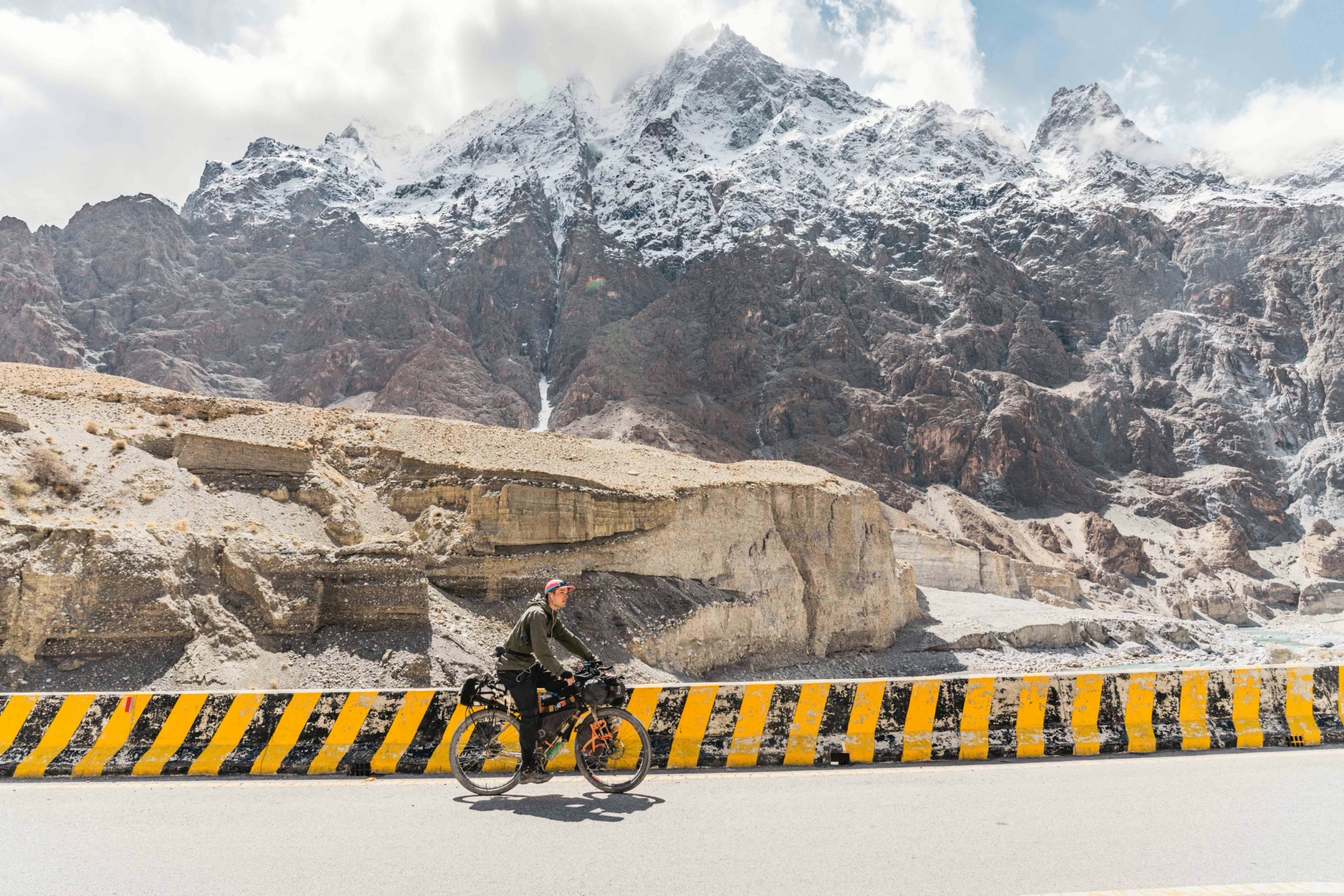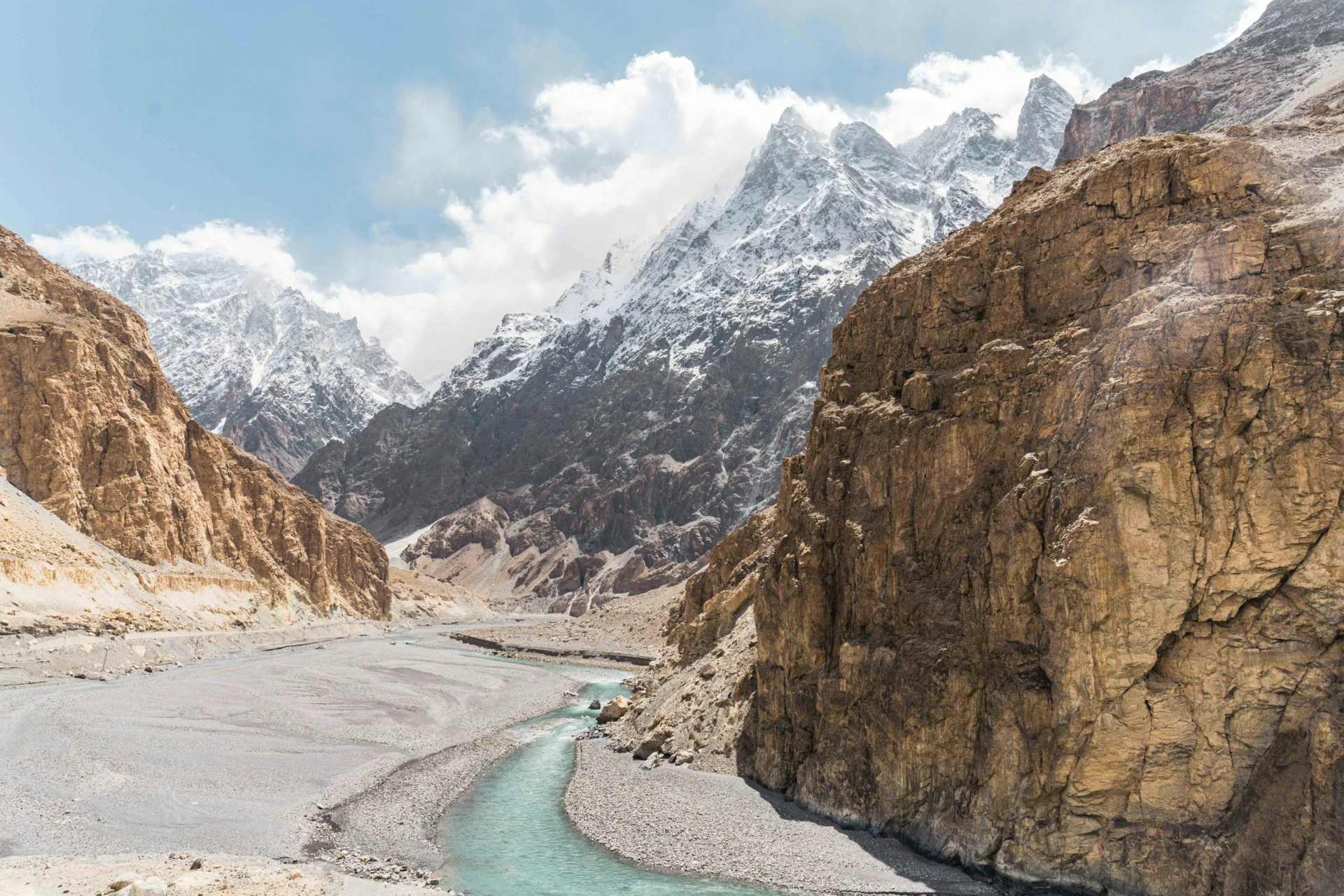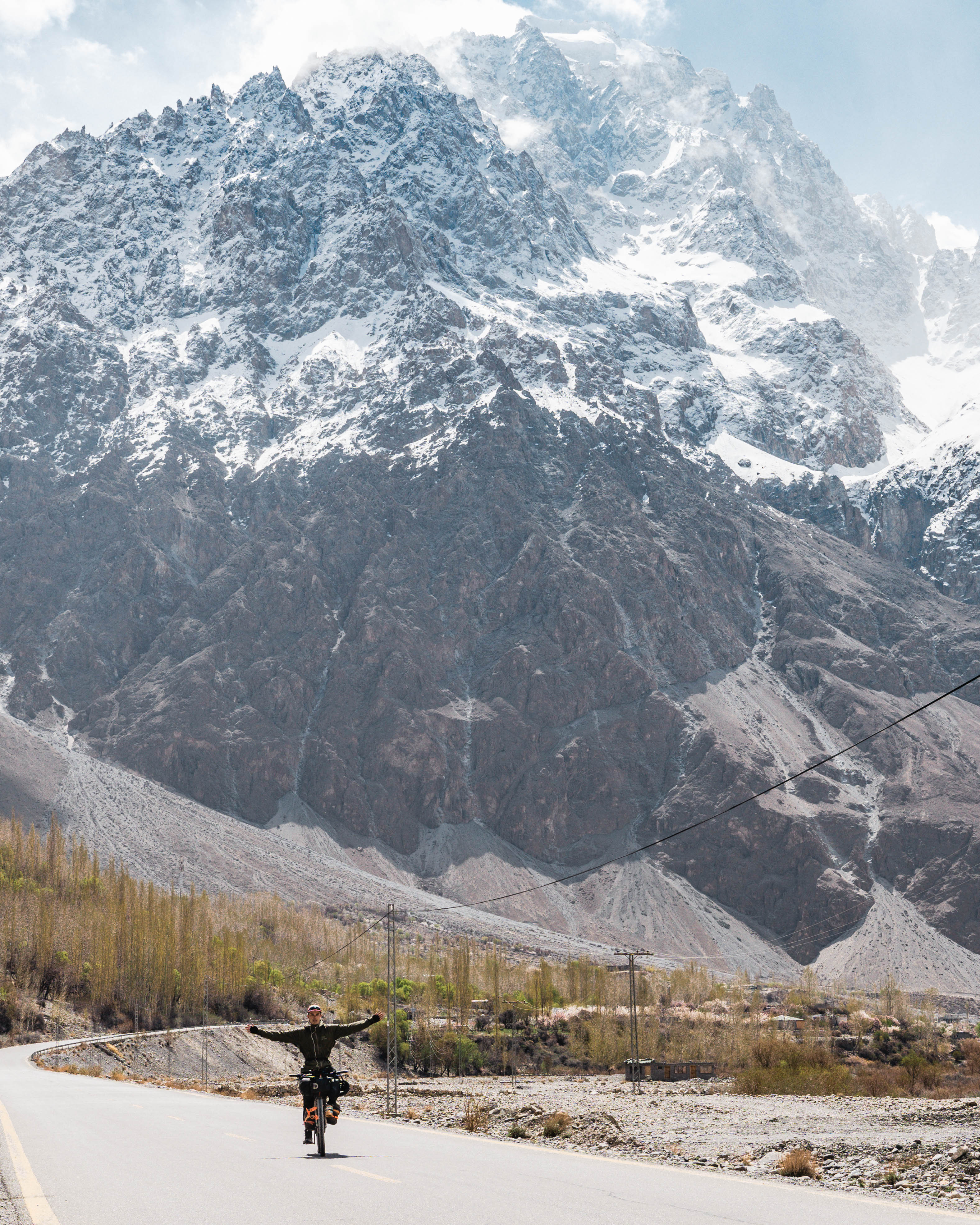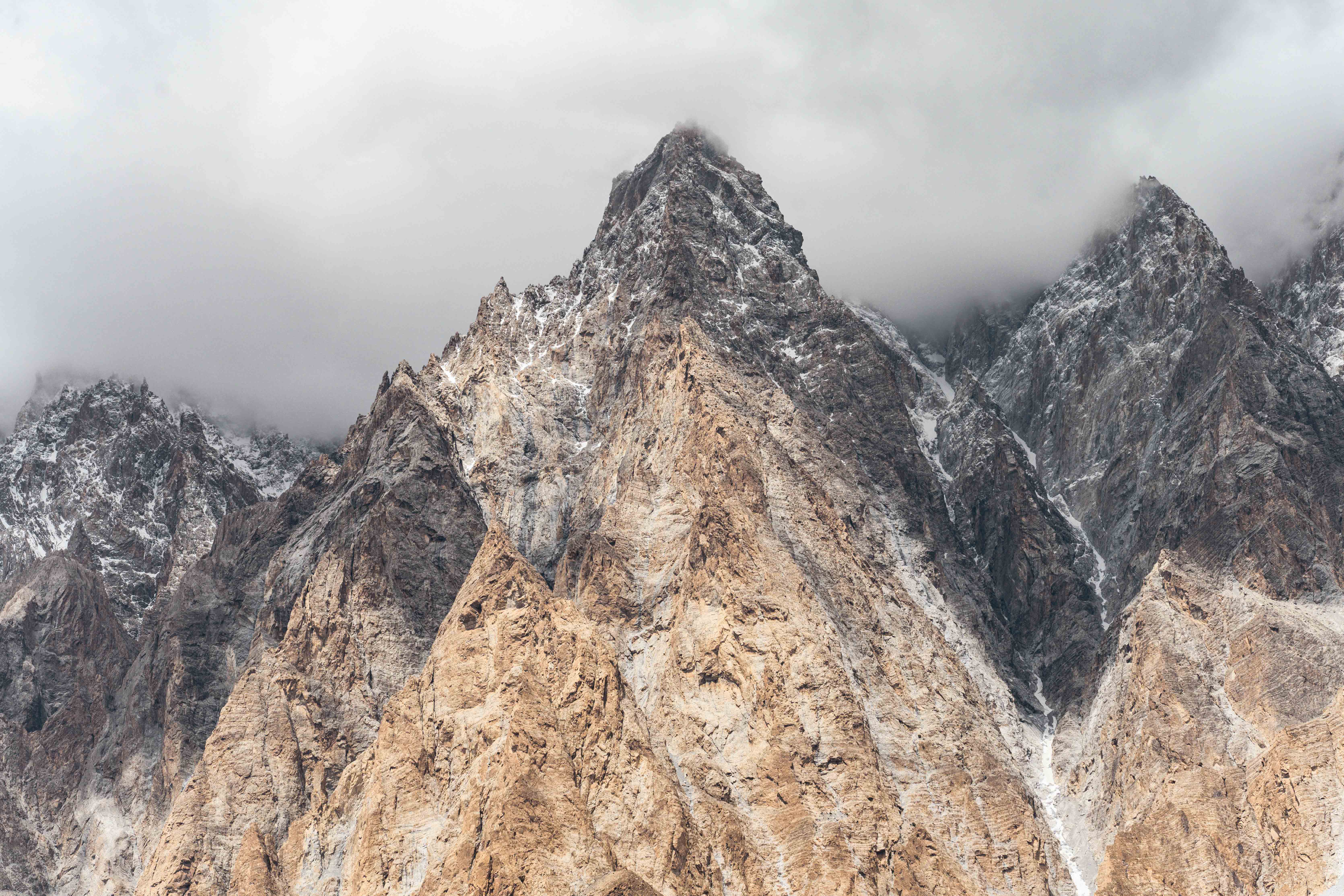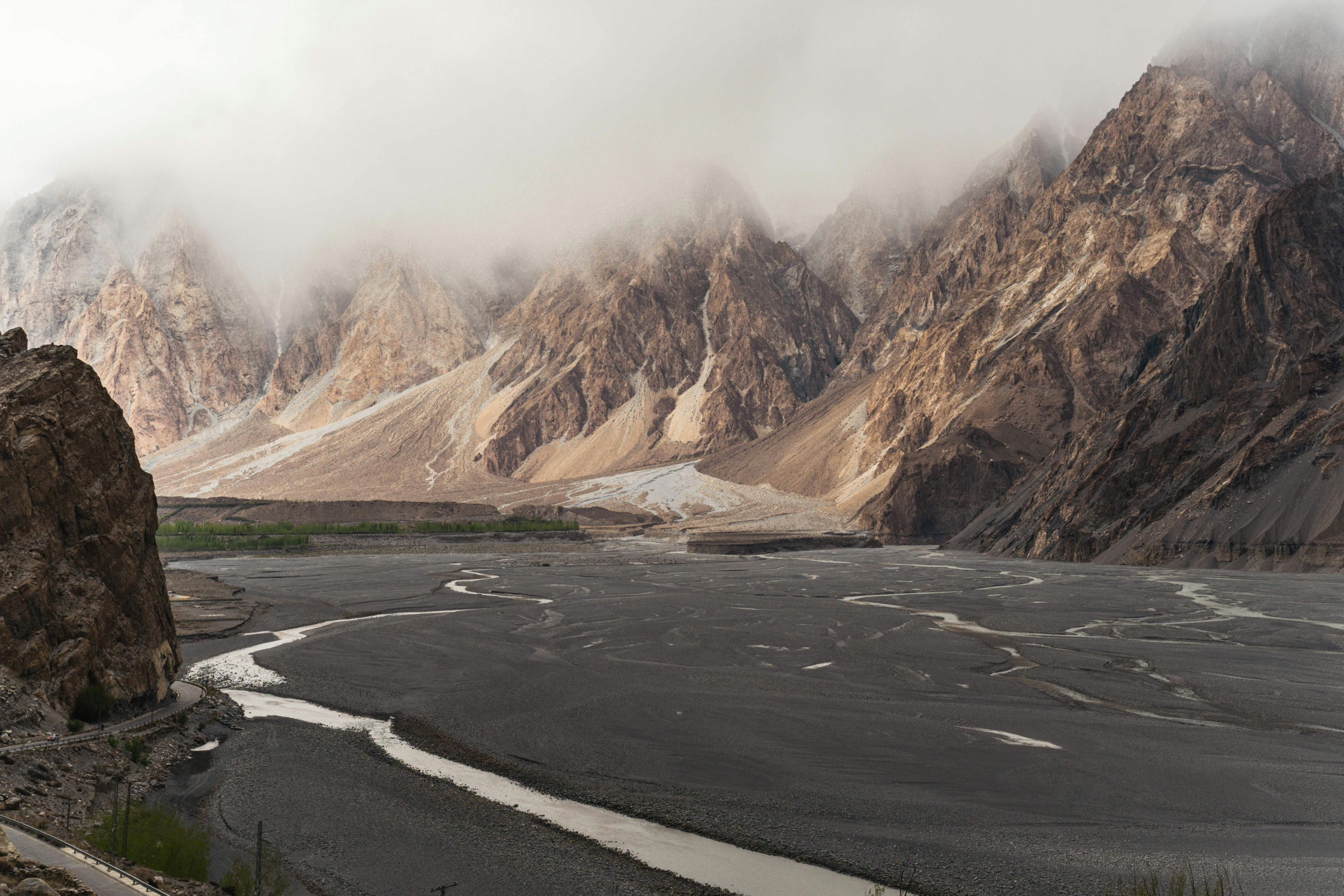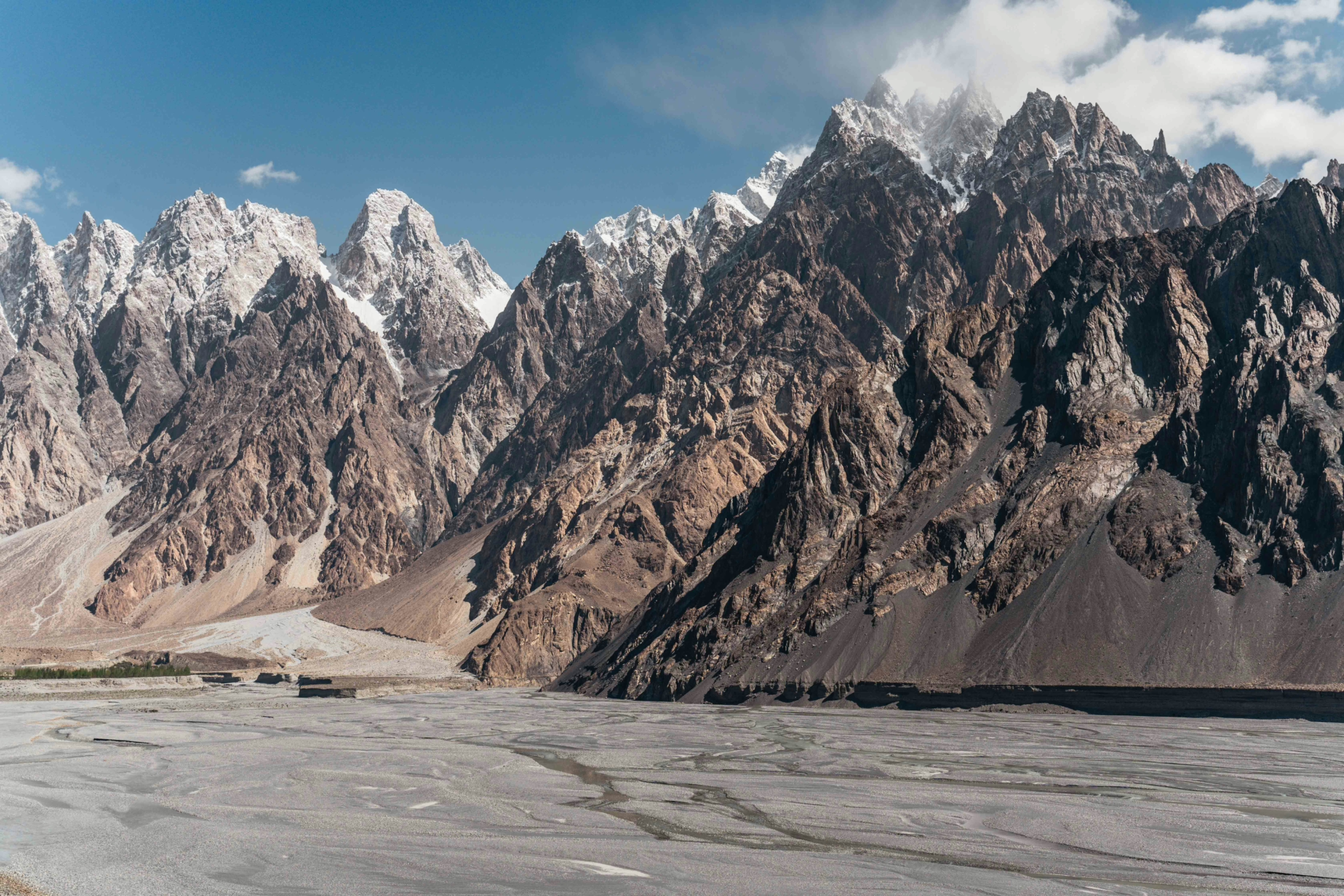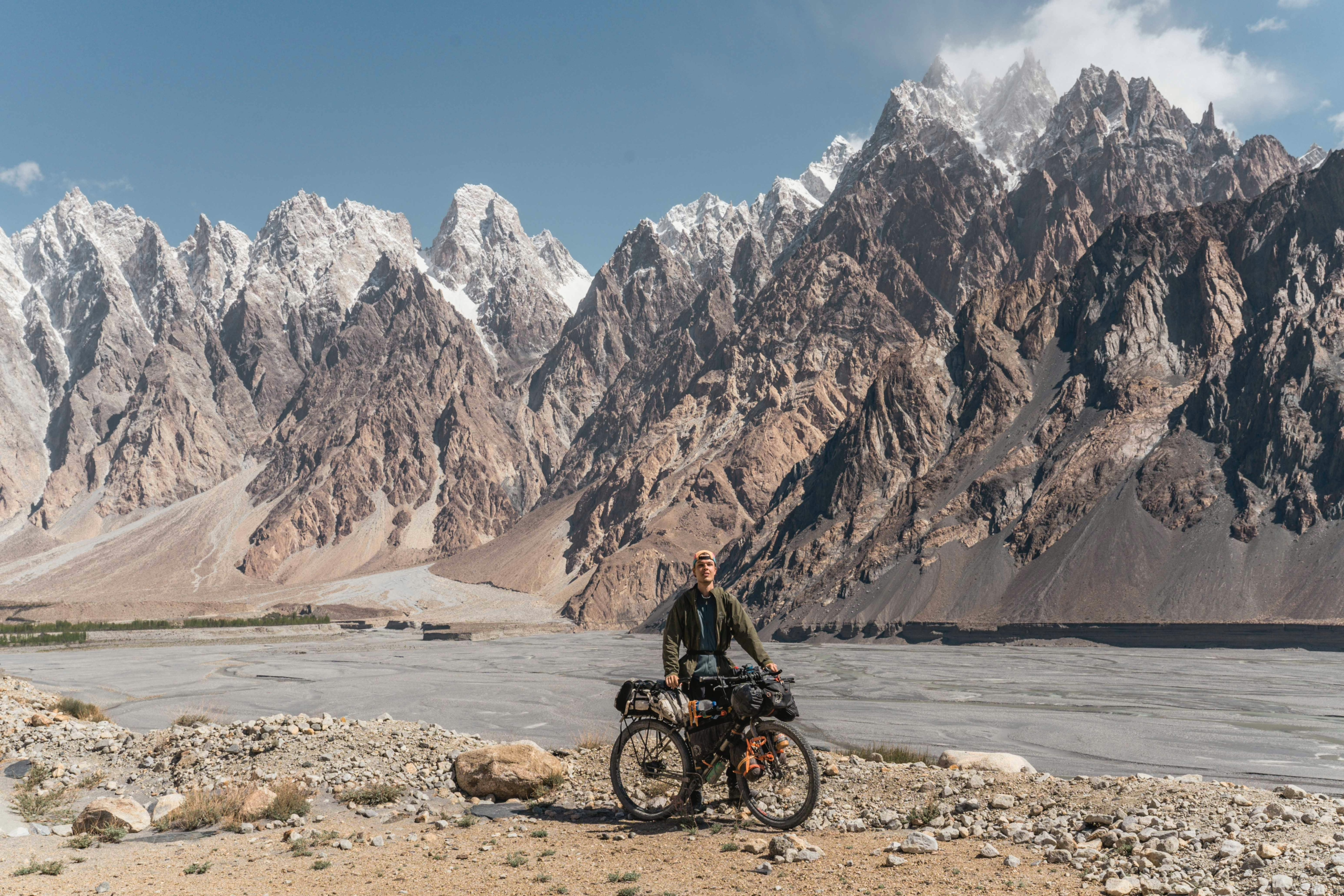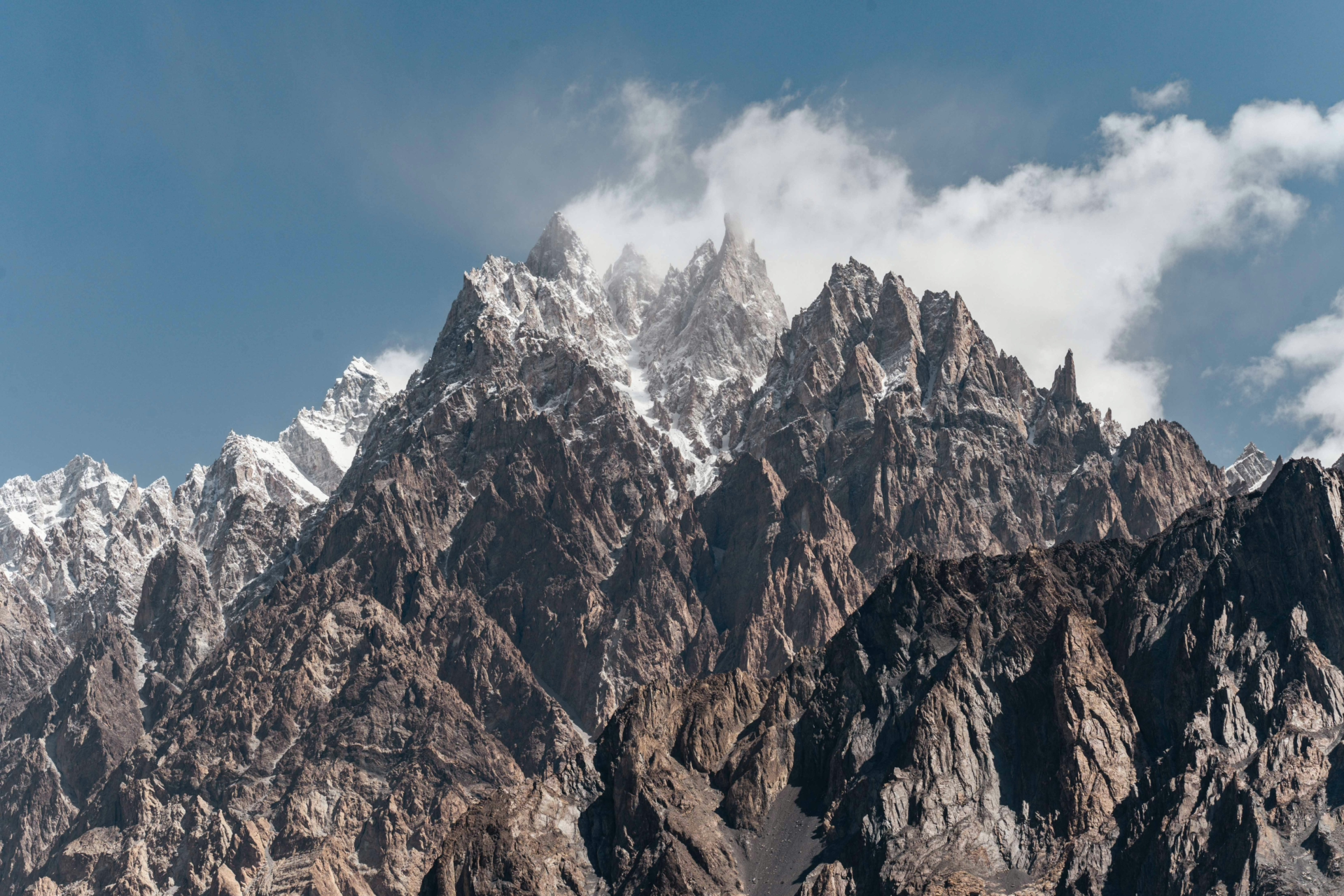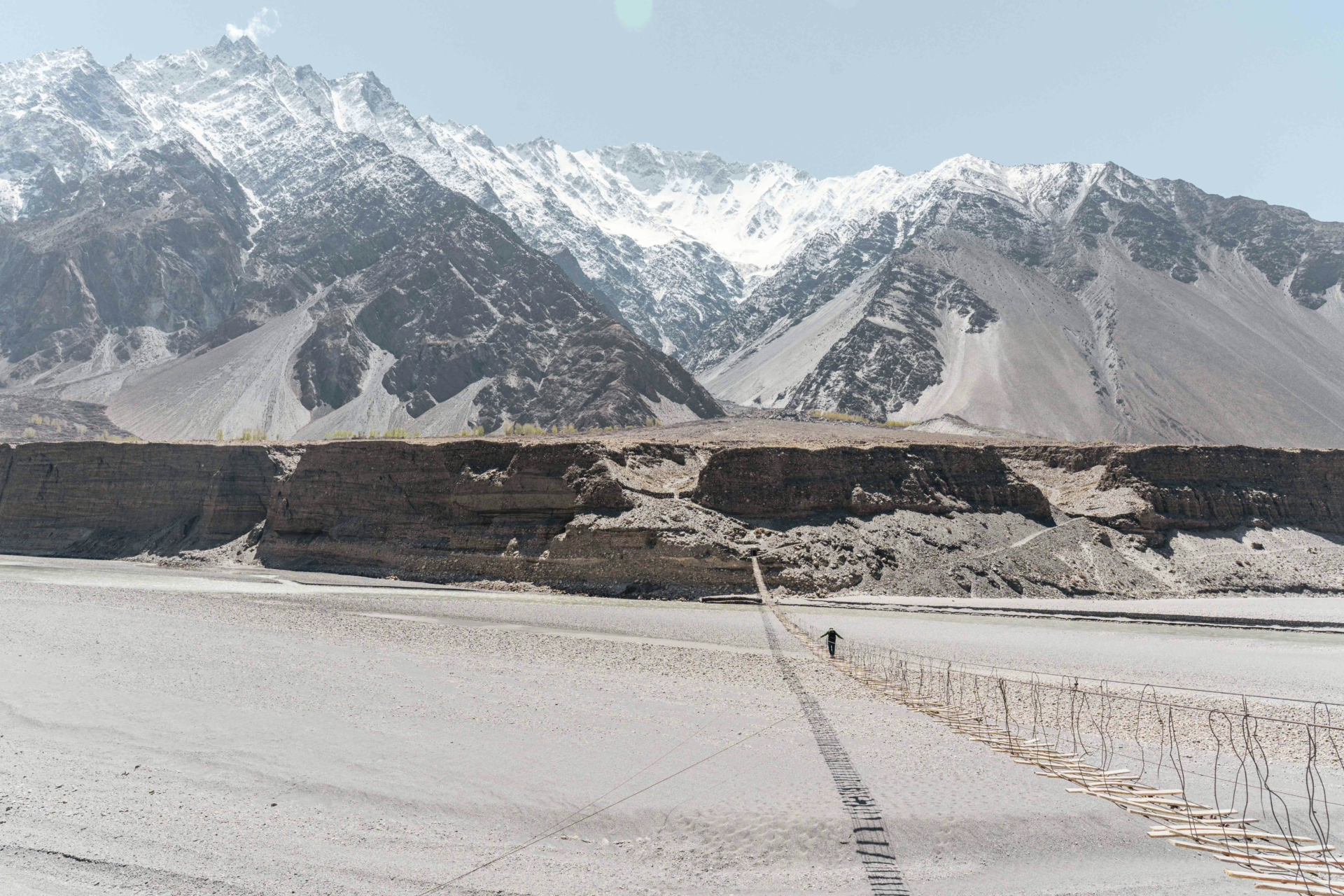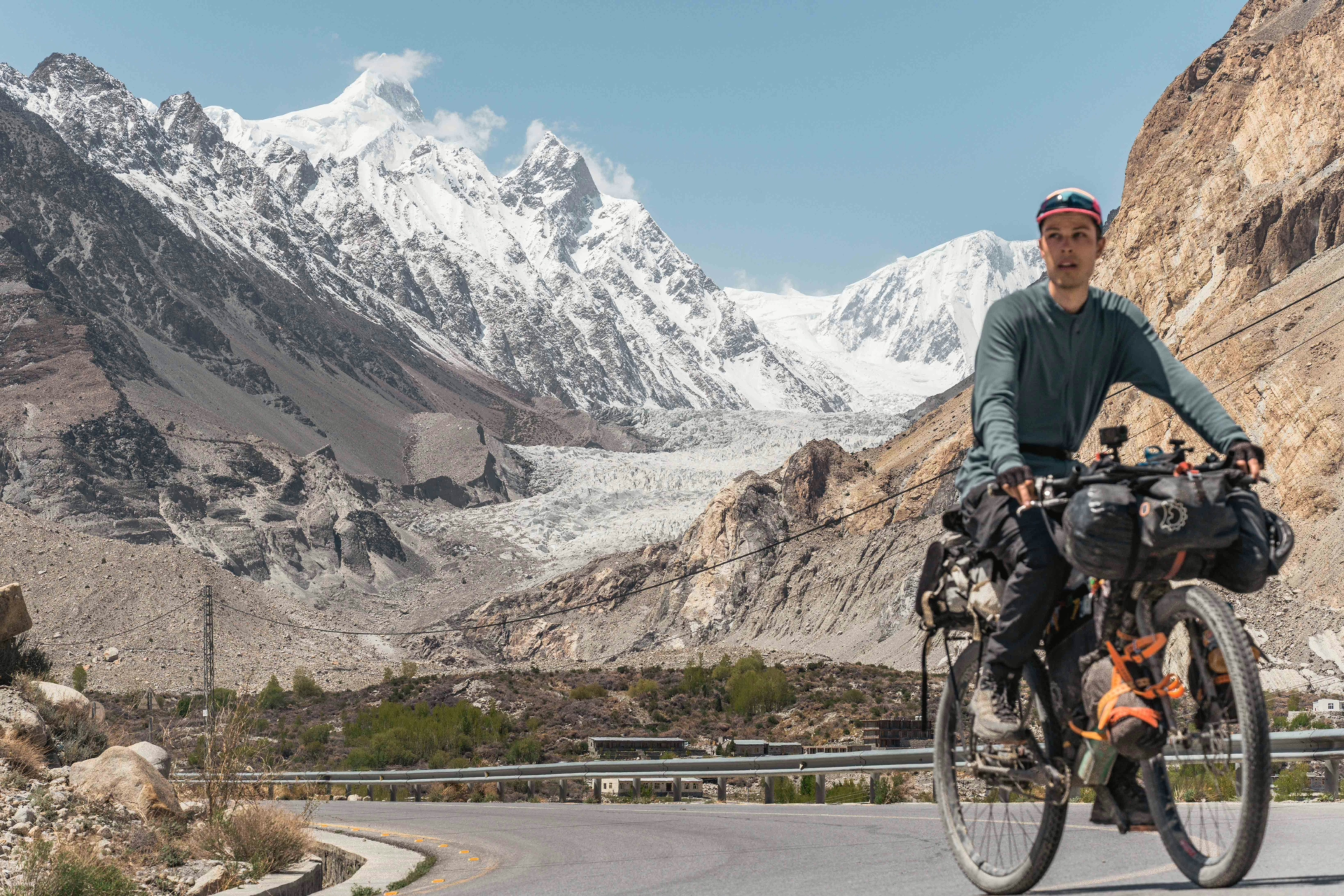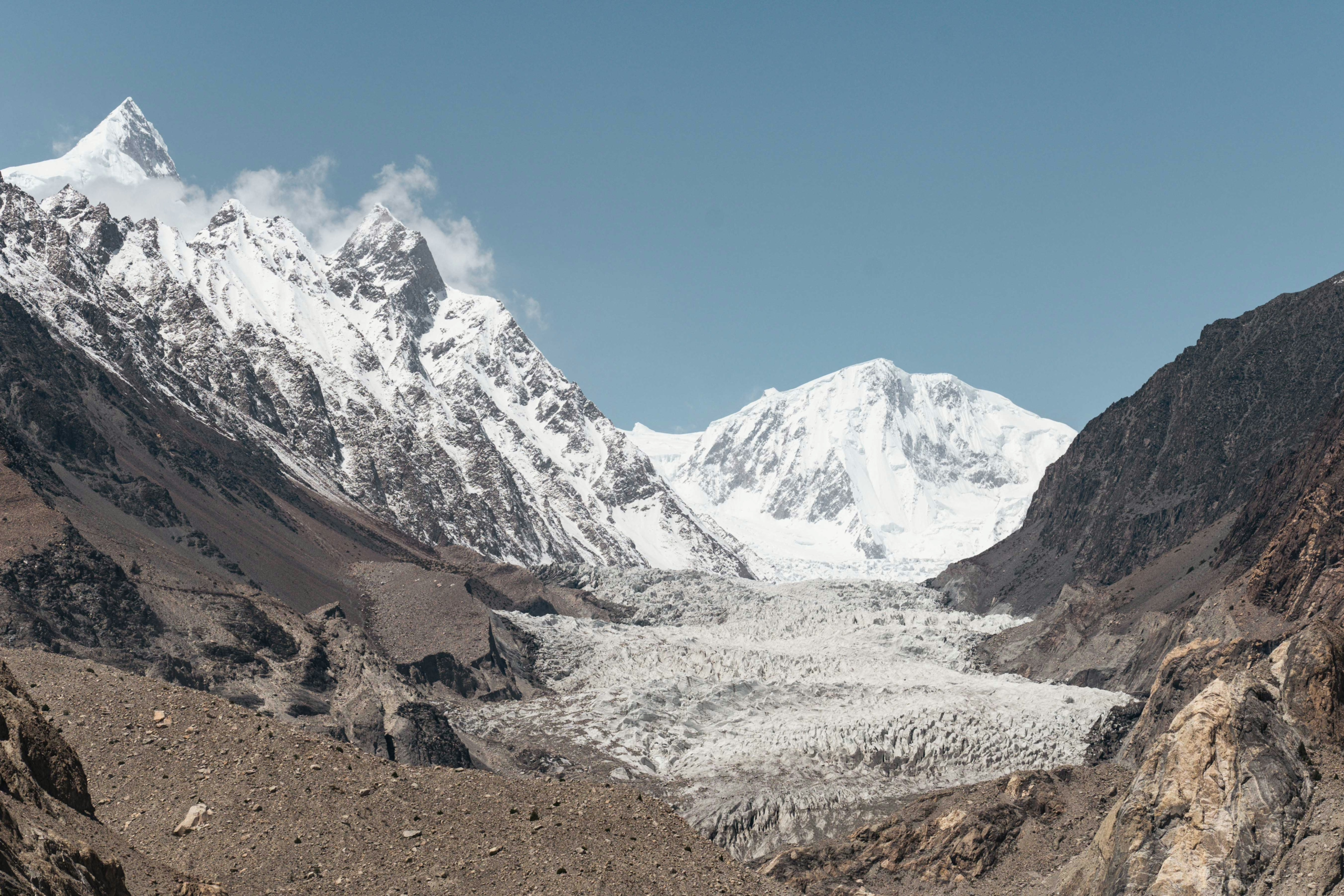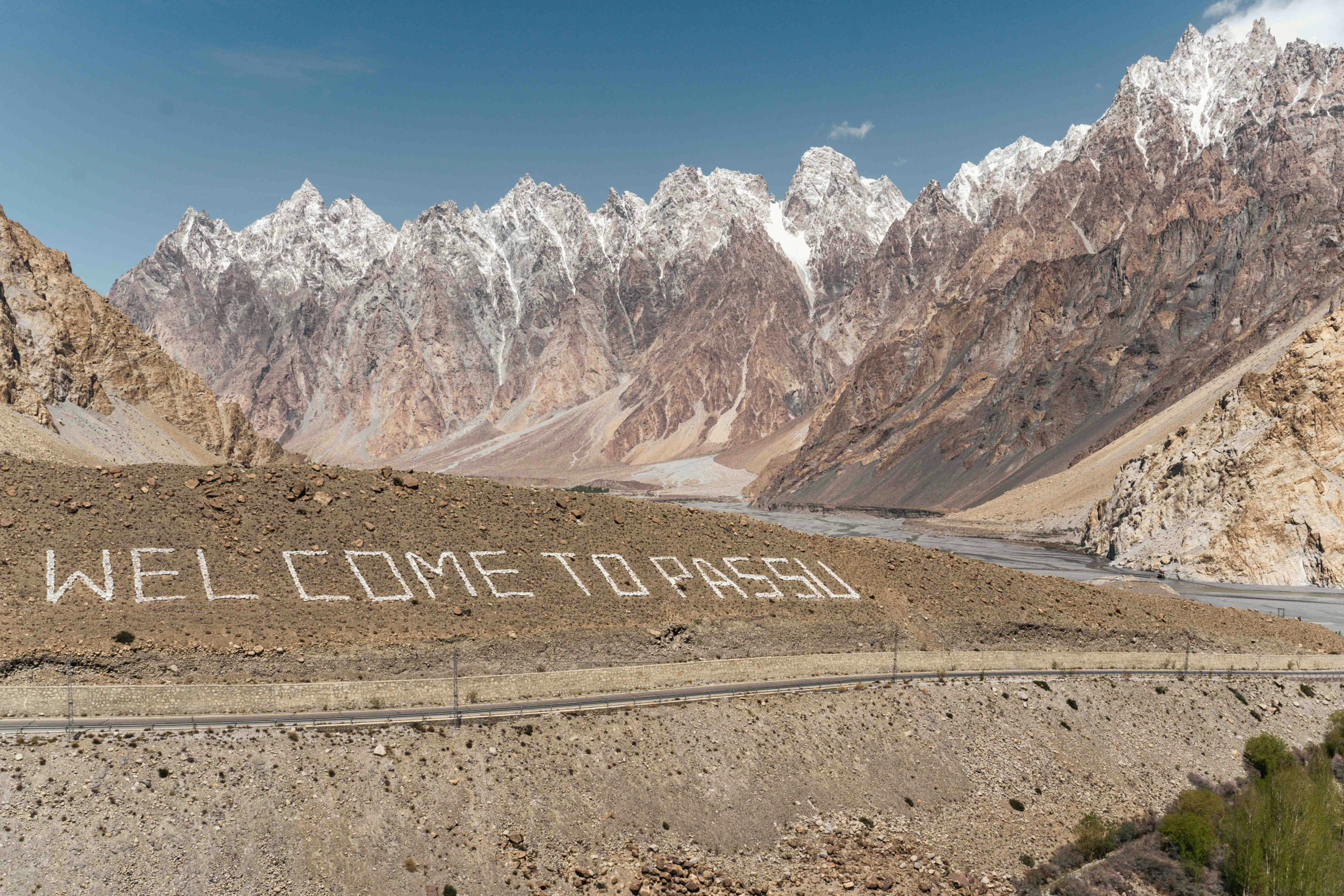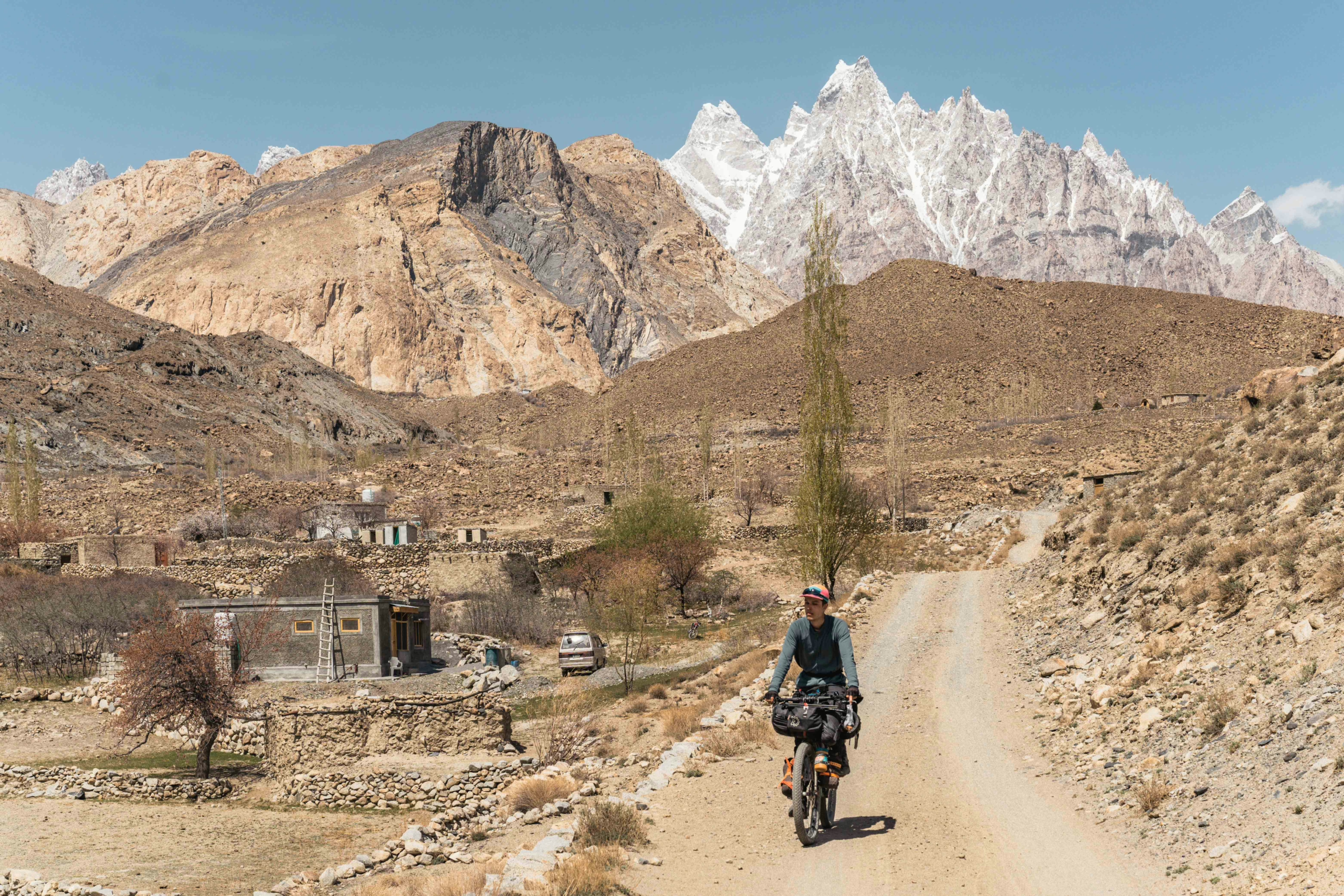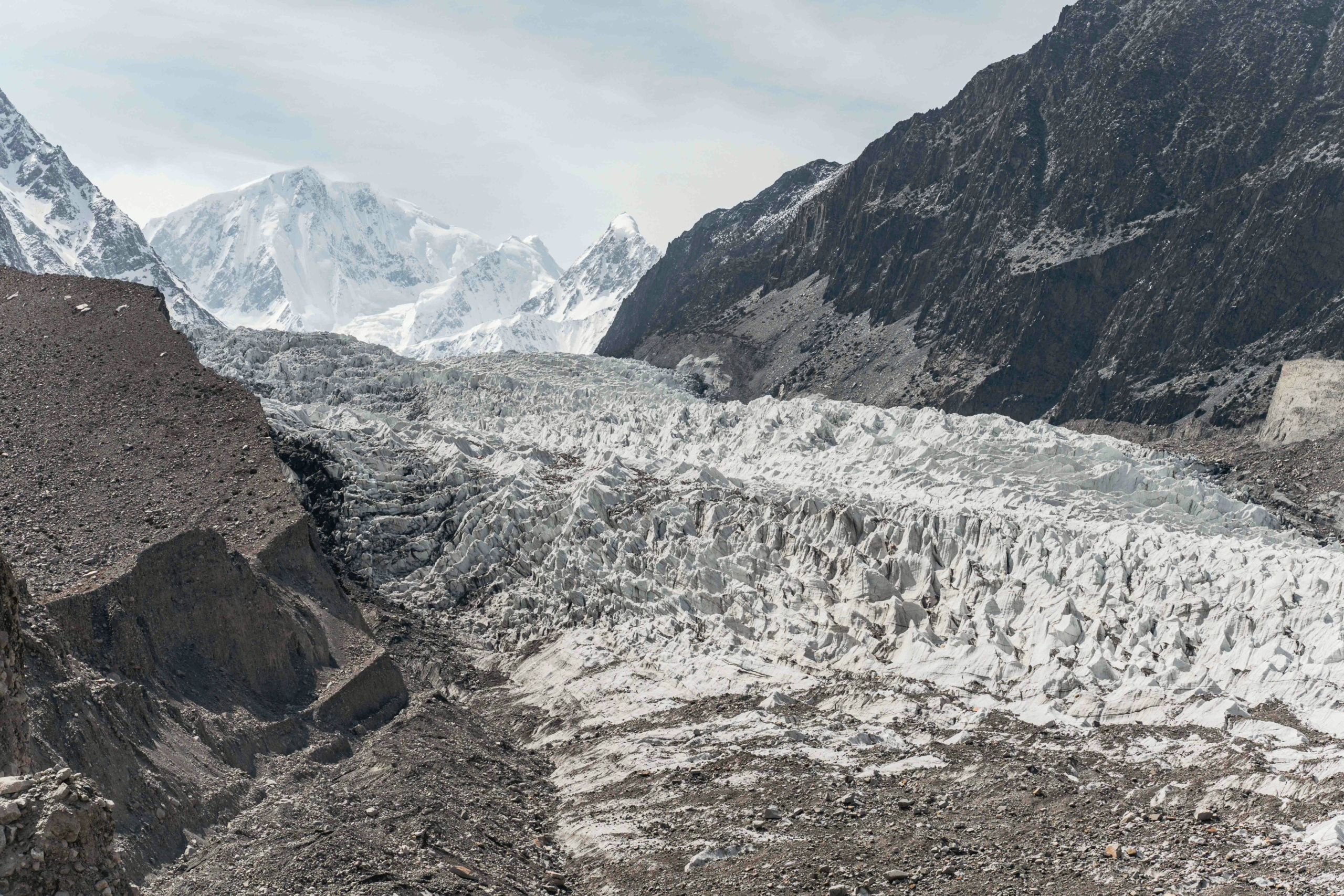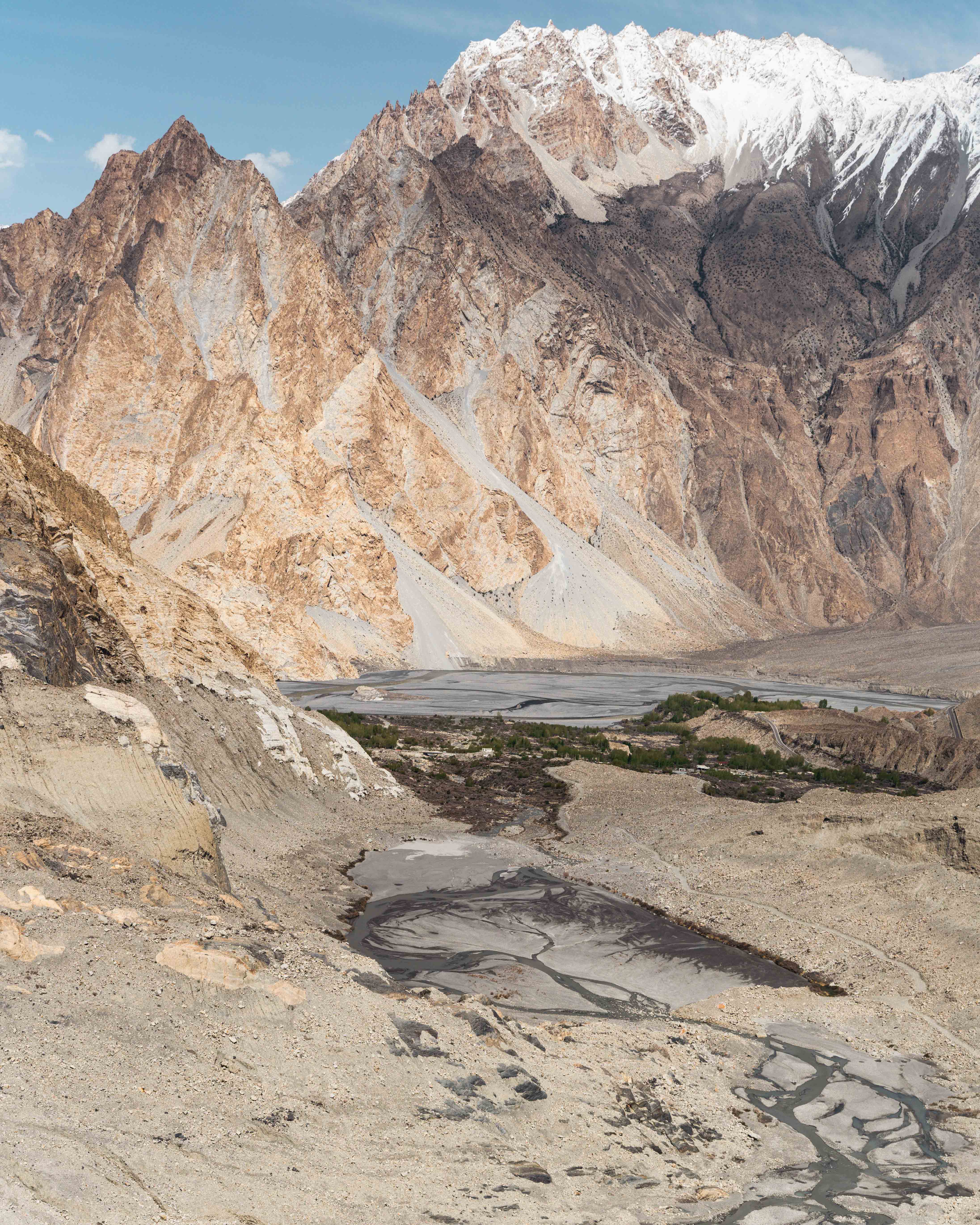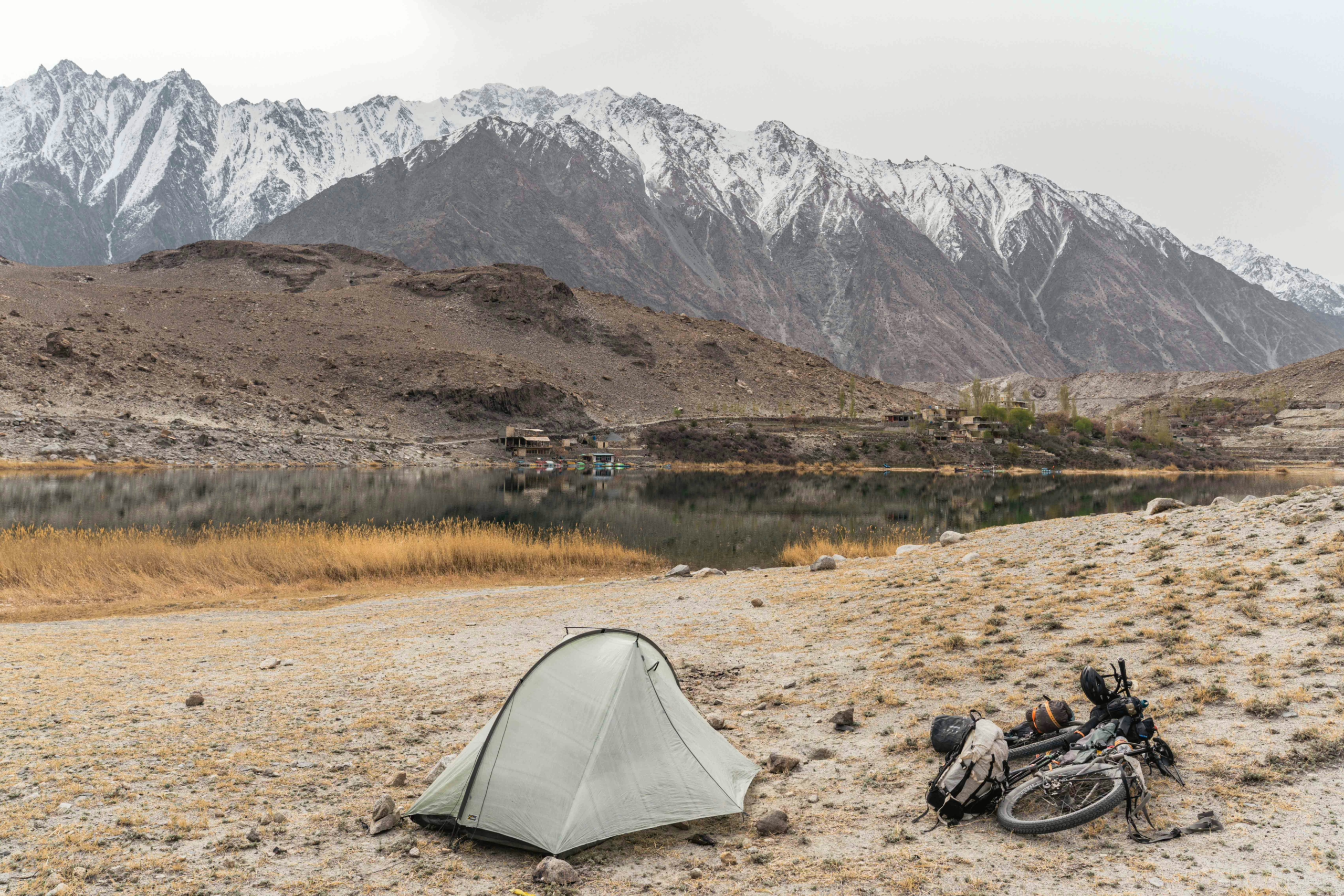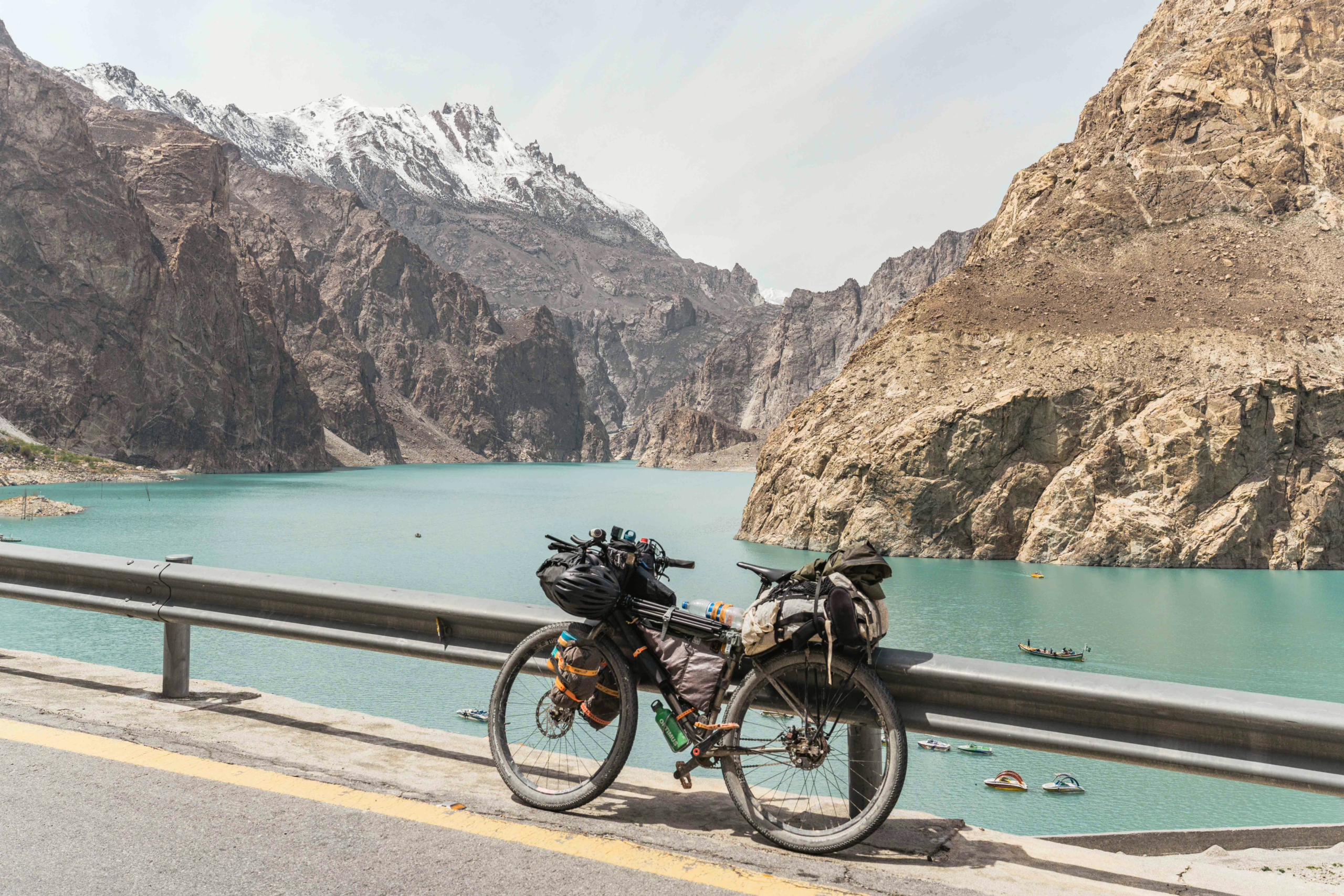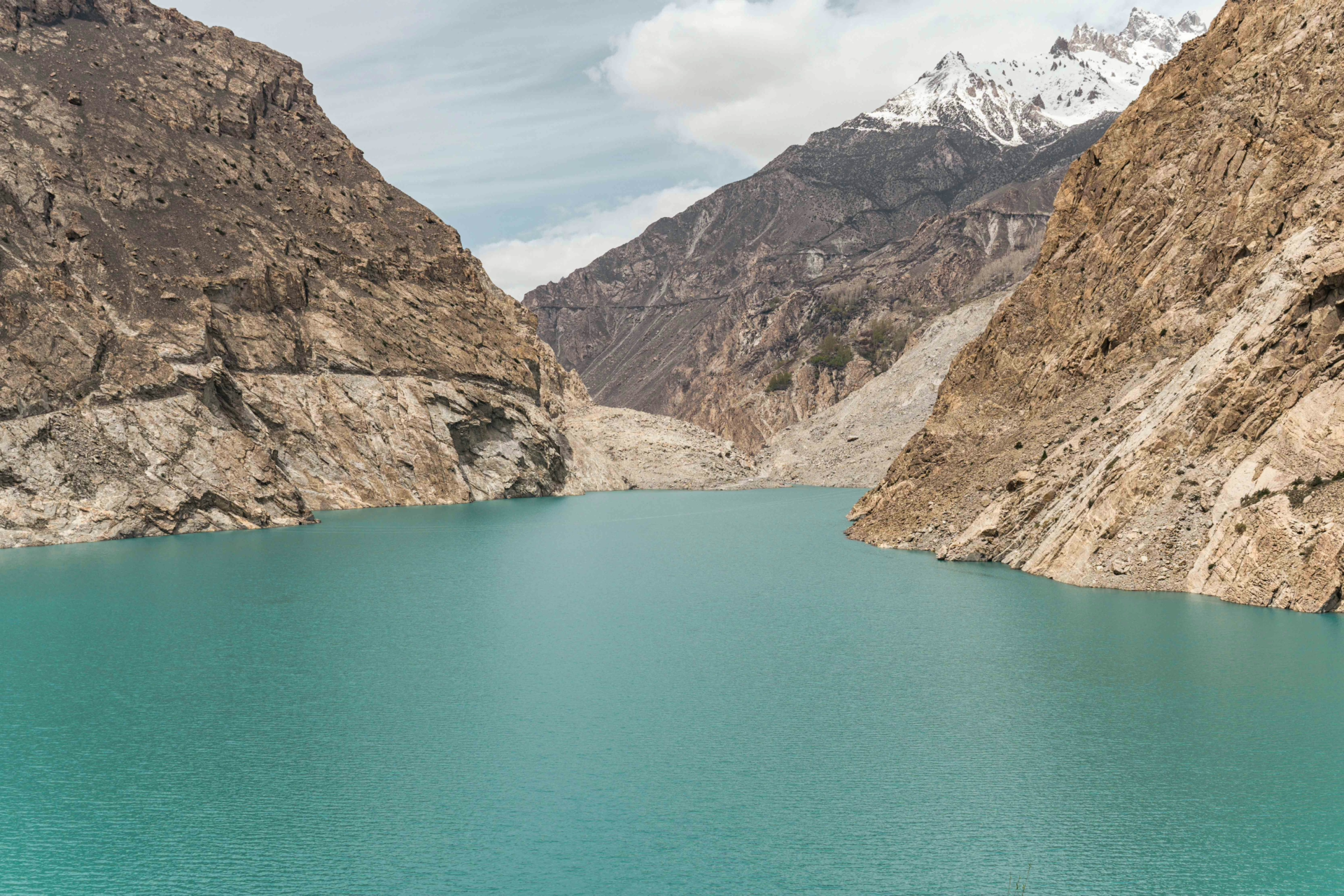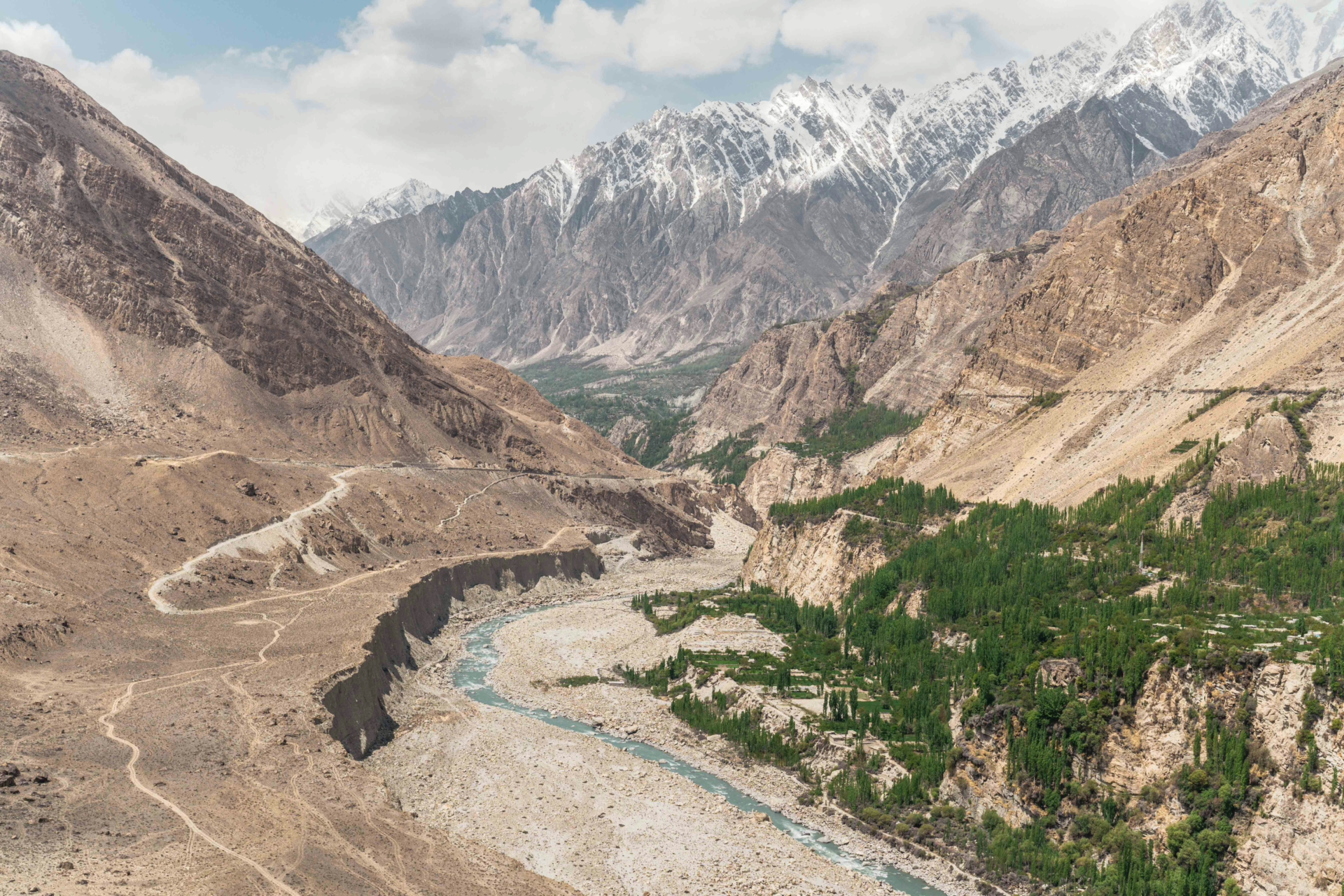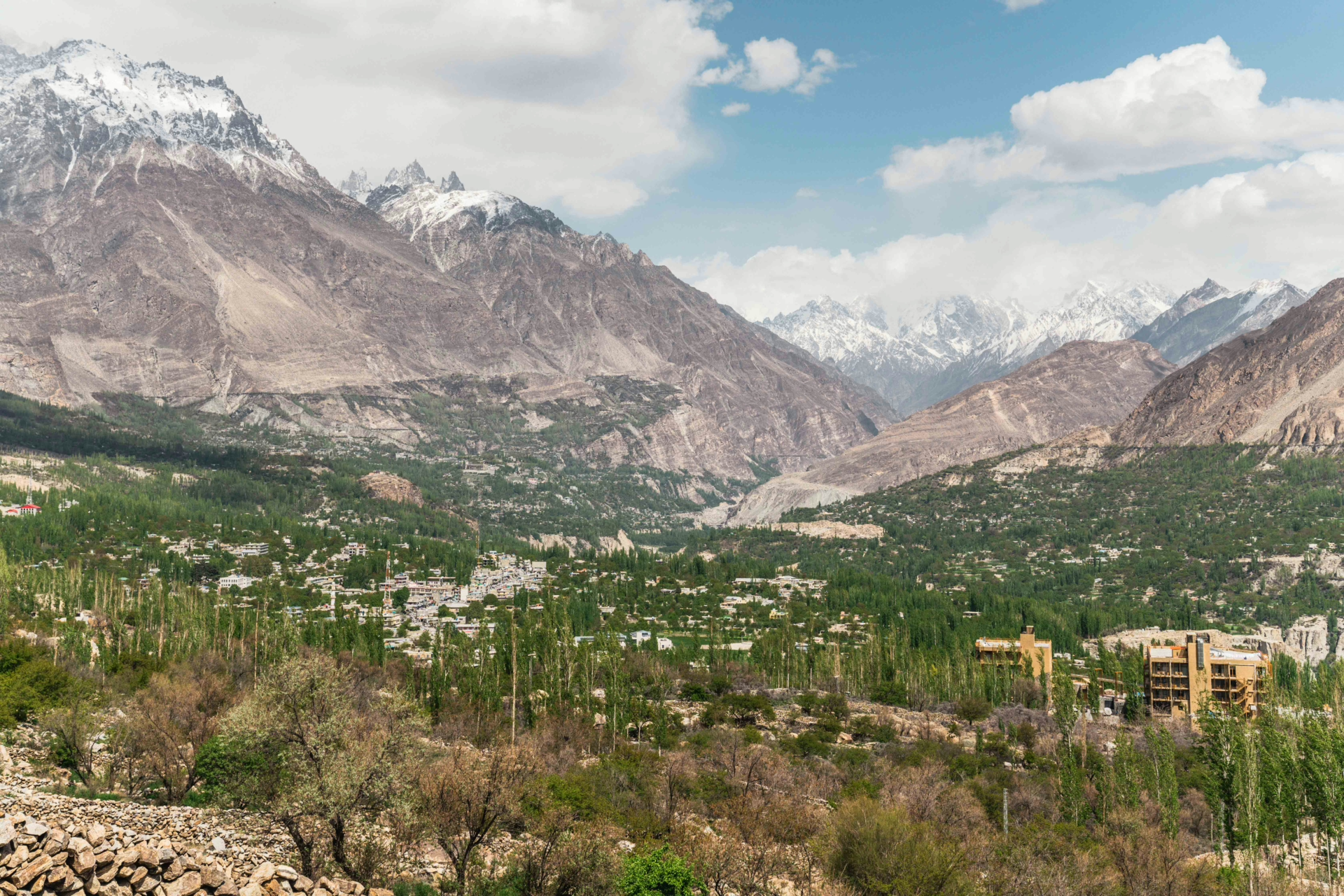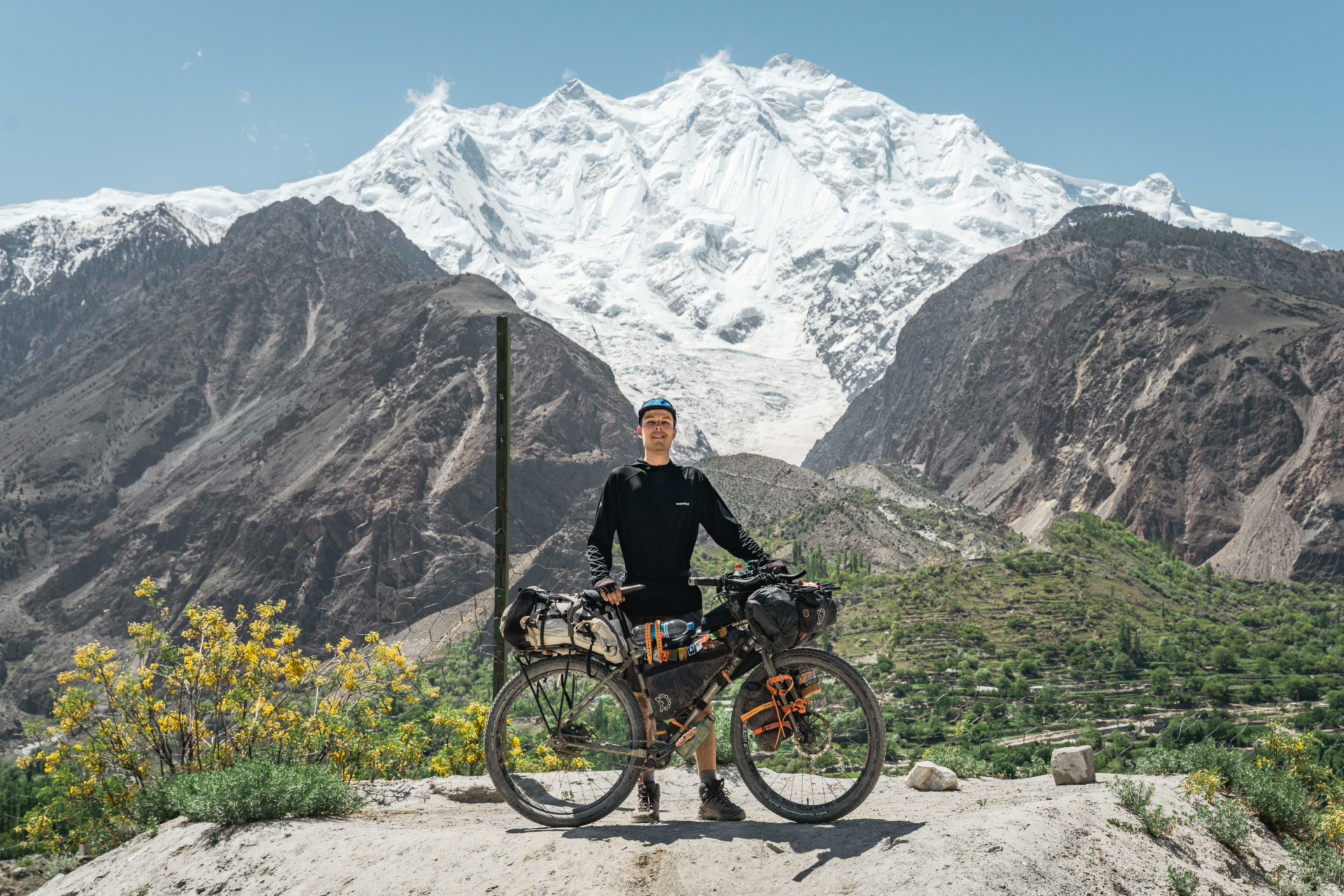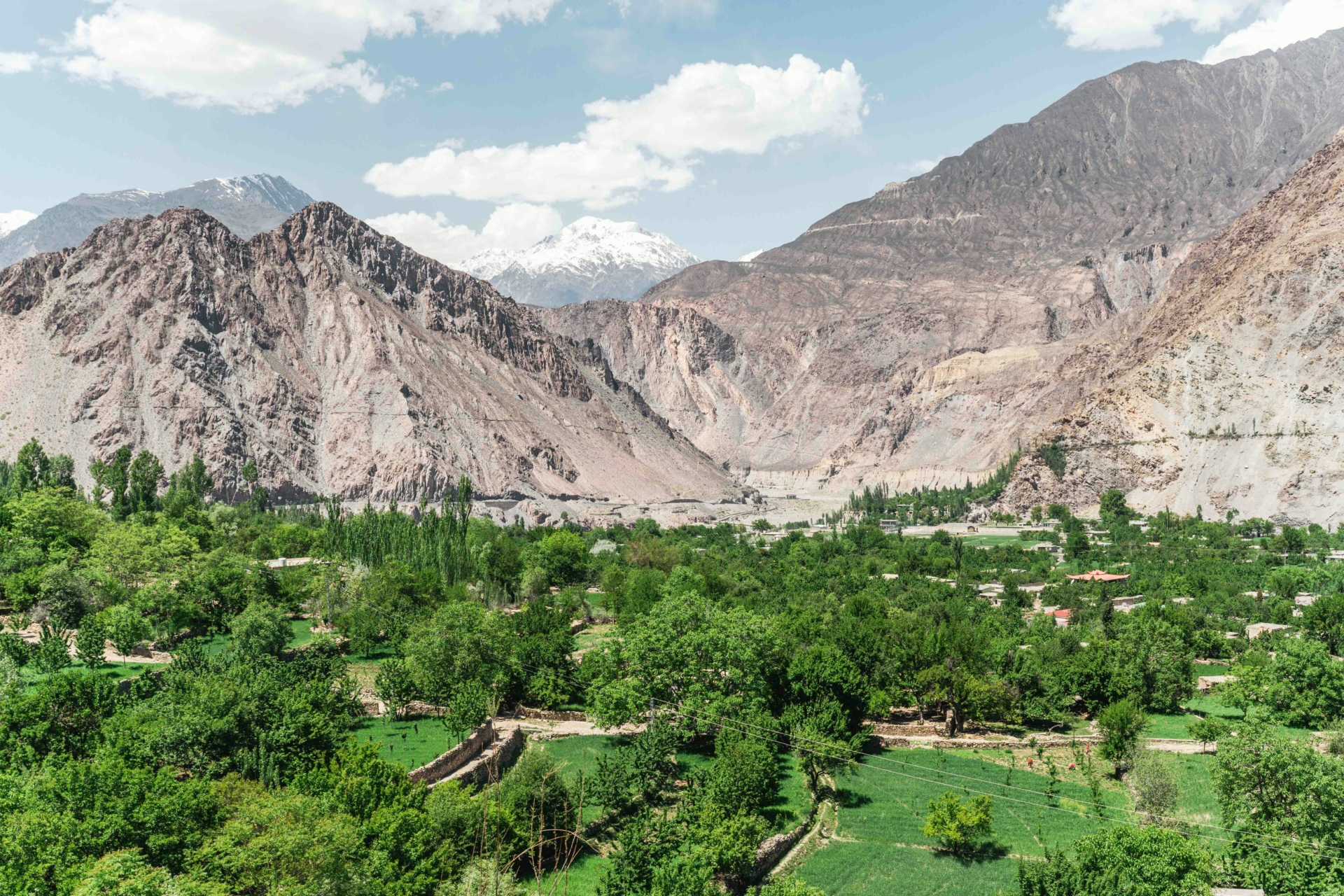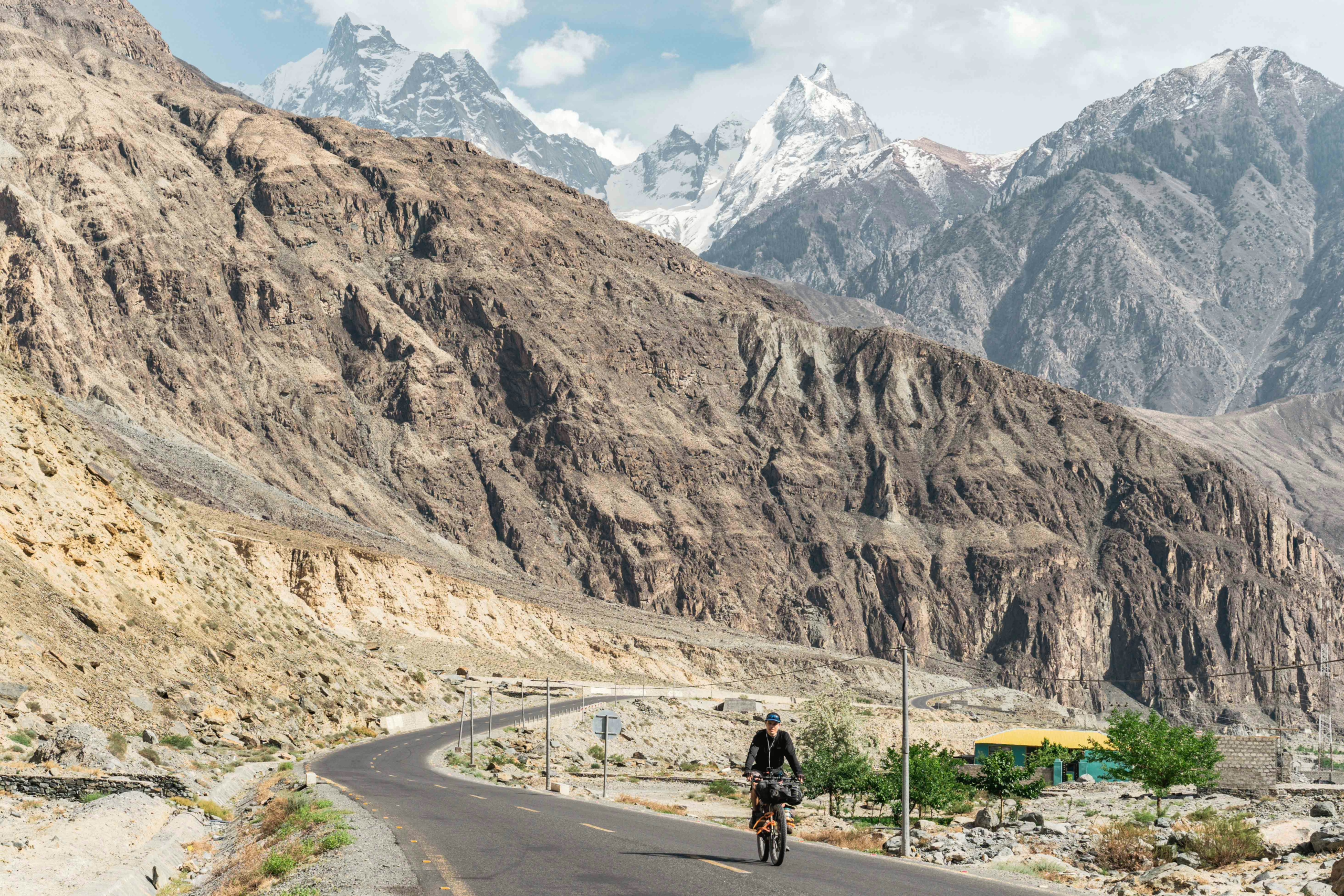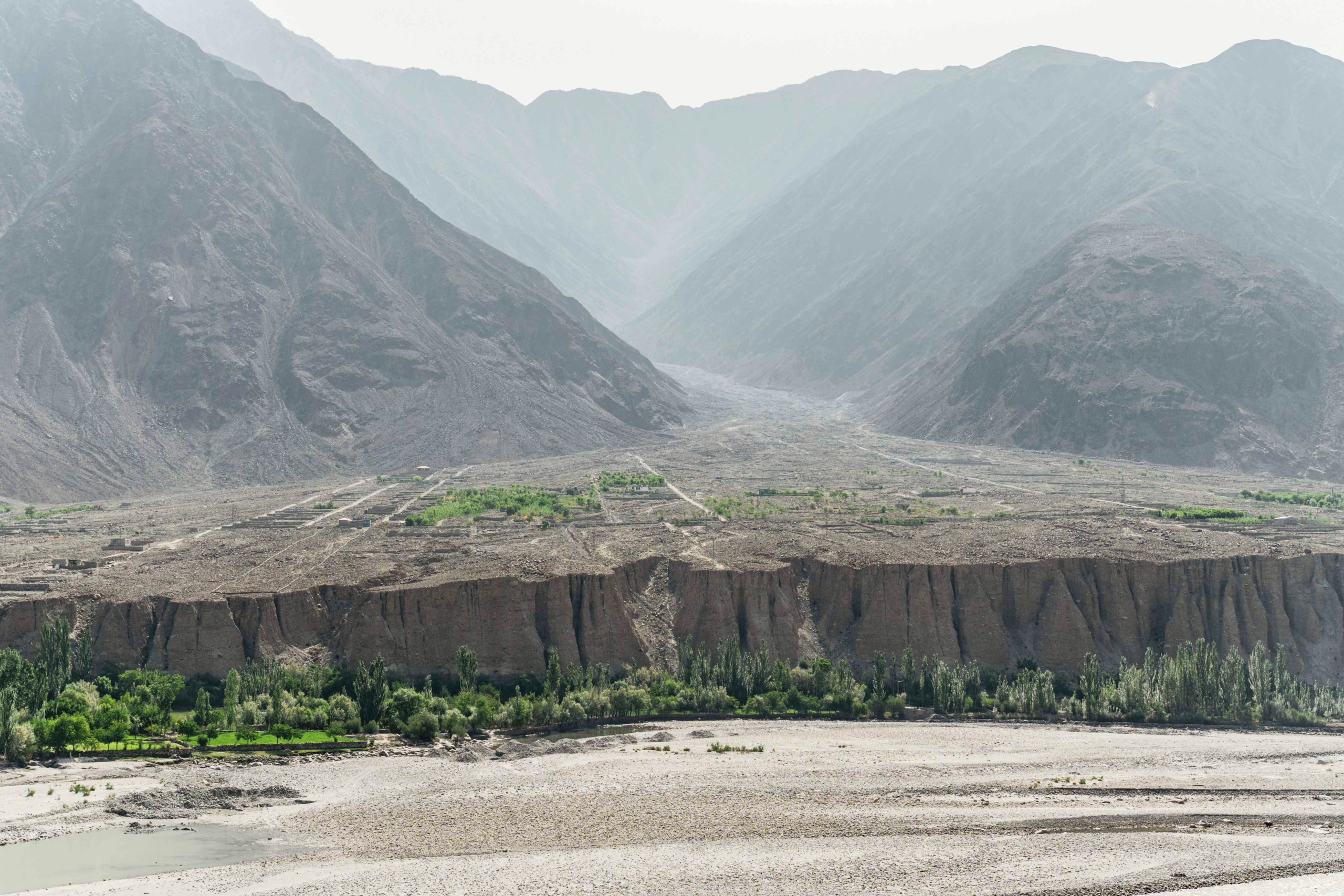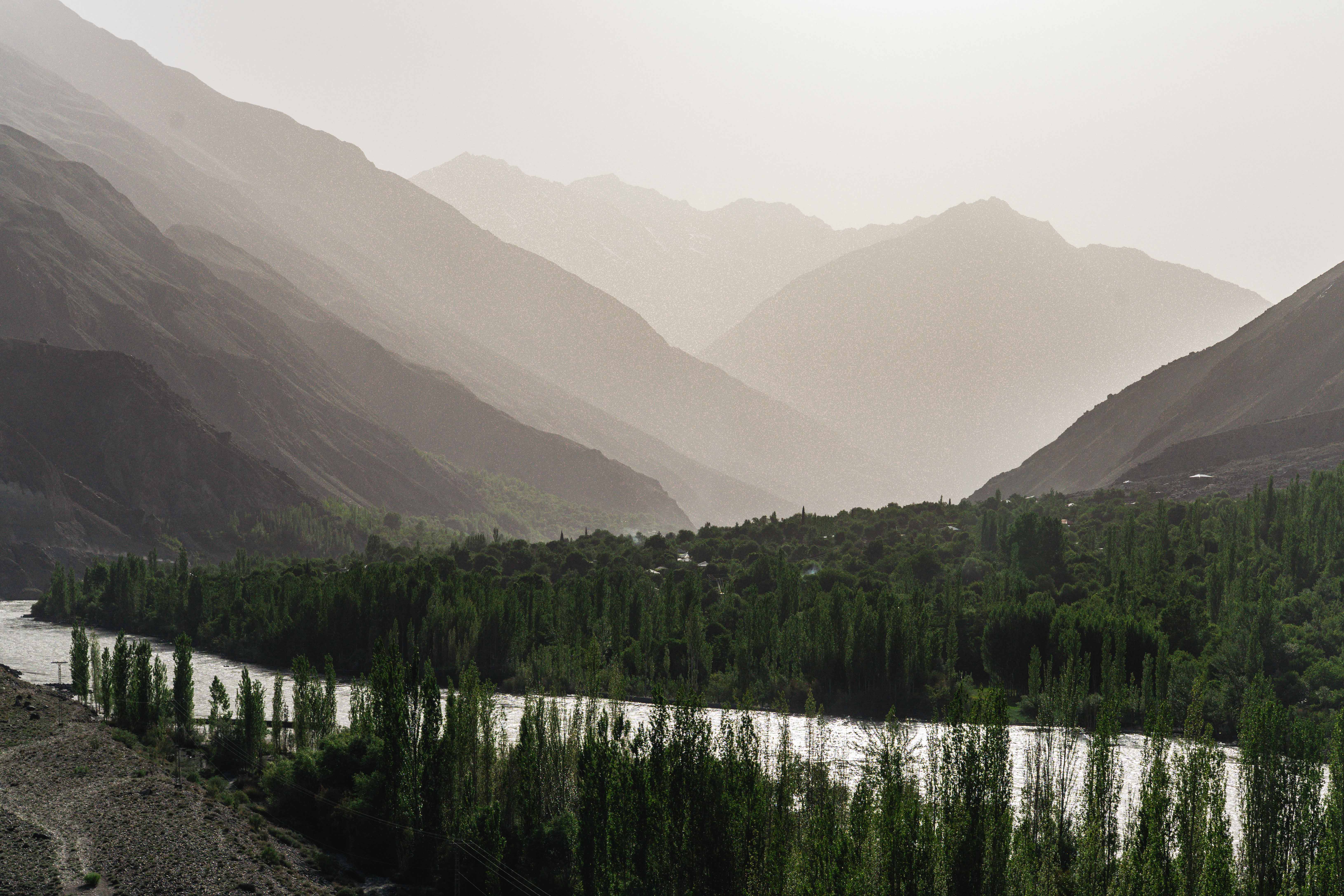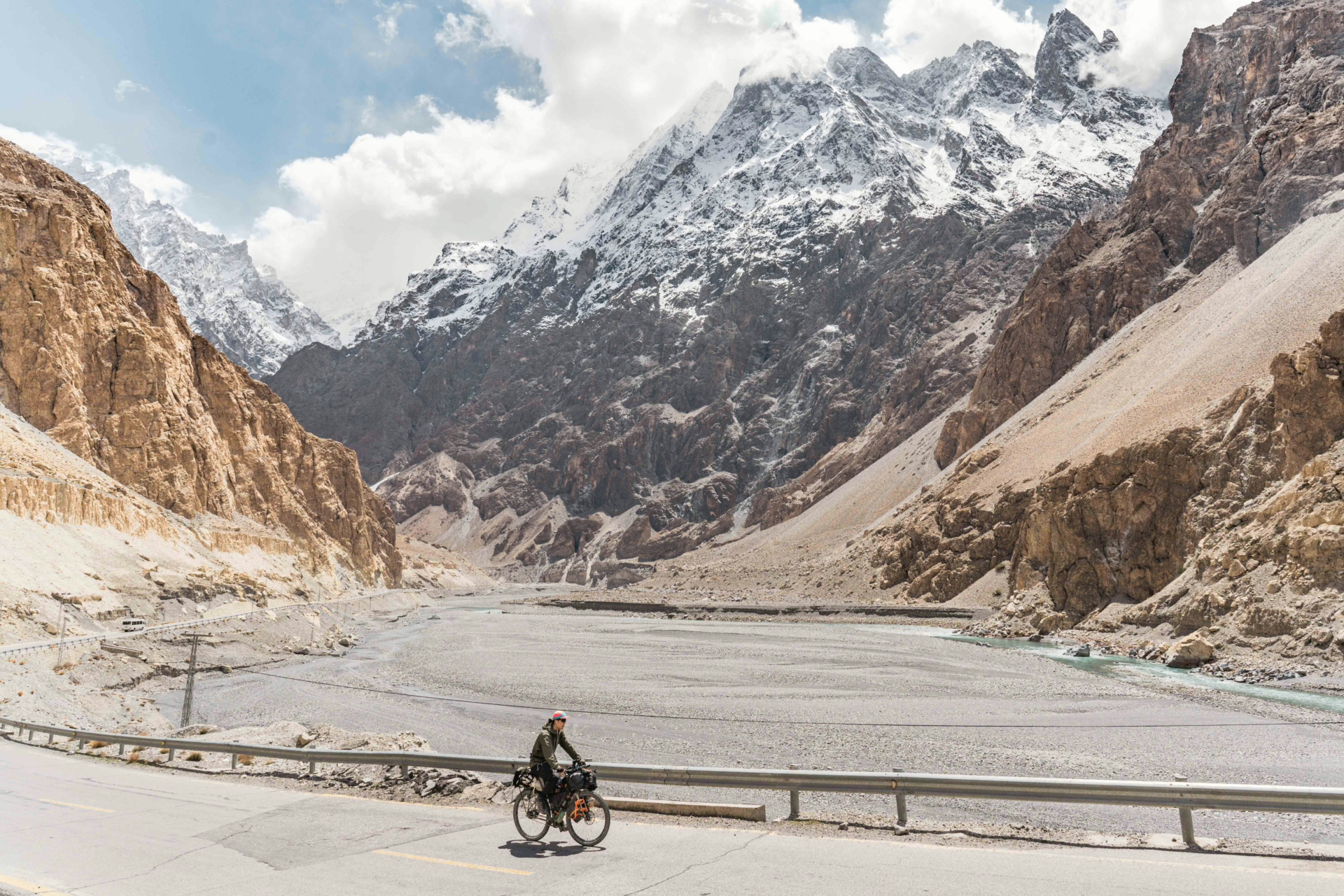
My journey cycling the Karakoram Highway continues, but not in China: After crossing the world’s highest border, the 4700m high Khunjerab Pass by bus (one is not allowed to cross in independently), I reached the Pakistani border town of Sost in the Autonomous Region of Gilgit-Baltistan.
Although it might not be as modern or well organised as China, one great feat was that I was able to communicate with locals again, as everyone here speaks English. And the scenery here was even more impressive than on the Karakoram Highway in Xinjiang, with some of the steepest mountain faces I have ever seen, being located right next to the road.
After cycling past some small villages full of blossoming apricot trees, I reached the village of Passu. Here the so-called Hunza Valley starts to widen, and one can visit the Passu Cones, also referred to as the Cathedrals, which are some of the most dramatic mountains not just in the Karakoram, but probably in the whole world. Passu is also home to the longest suspension bridge in all of Hunza, measuring 214m in length. After crossing it I went on a short hike to a viewpoint overlooking the impressive Passu Glacier, which also offers views of 7000m peaks such as Shispare (7611m). Near the trailhead of the hike lies the Lake Borith, where I spent my first night wild camping in Pakistan.
The next day I continued my journey along the Karakoram Highway, as I passed by the stunning Lake Attabad and eventually reached Aliabad, the first bigger town for me in Pakistan, where I was finally able to get a SIM card. After resting for a few days I made my way towards Gilgit, capital of Gilgit-Baltistan, passing through many more picturesque villages on the way, all while being surrounded by the massive peaks of the Karakoram, such as Rakaposhi (7788m).
